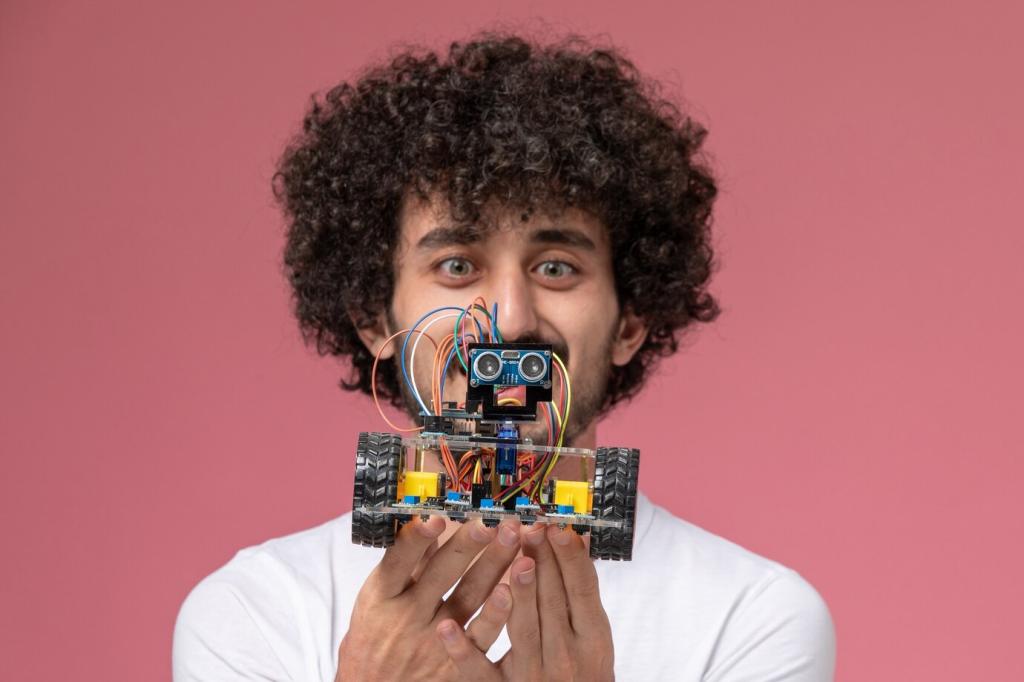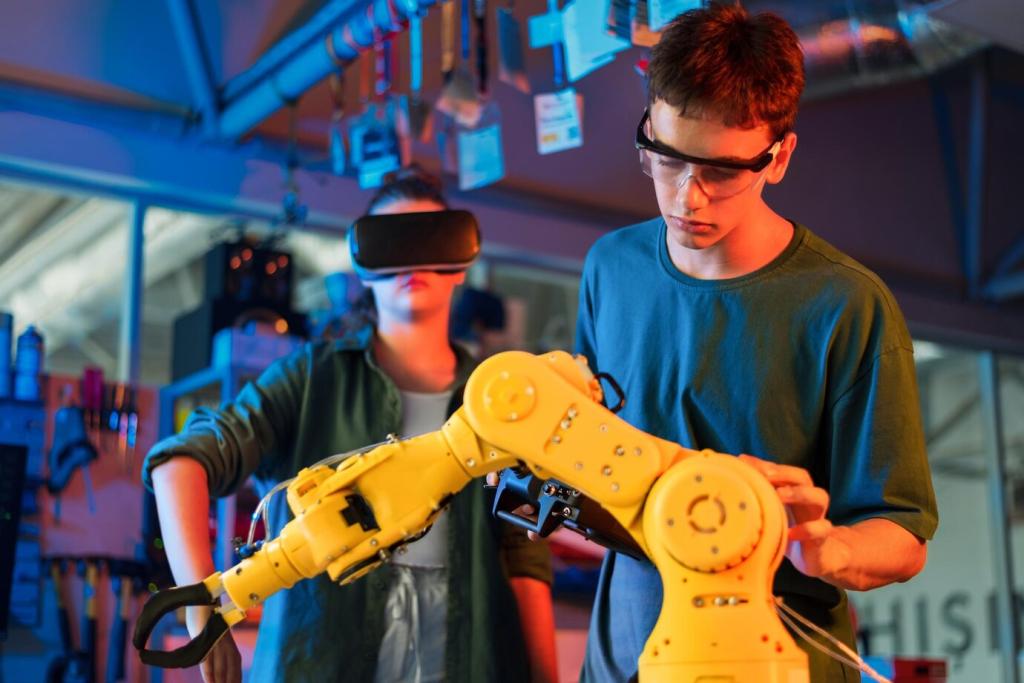Sensing the World: Eyes, Ears, and Touch
Ultrasonic sensors measure distance by timing echoes, infrared detects edges or lines, and light sensors gauge brightness for environment-aware behavior. Start with ultrasonic for satisfying, visible results that make navigation feel magical.
Sensing the World: Eyes, Ears, and Touch
Attach a low-cost camera and use basic computer vision to detect colors or shapes. You’ll see how simple thresholds create useful behaviors, laying the groundwork for more advanced AI-driven perception later.





